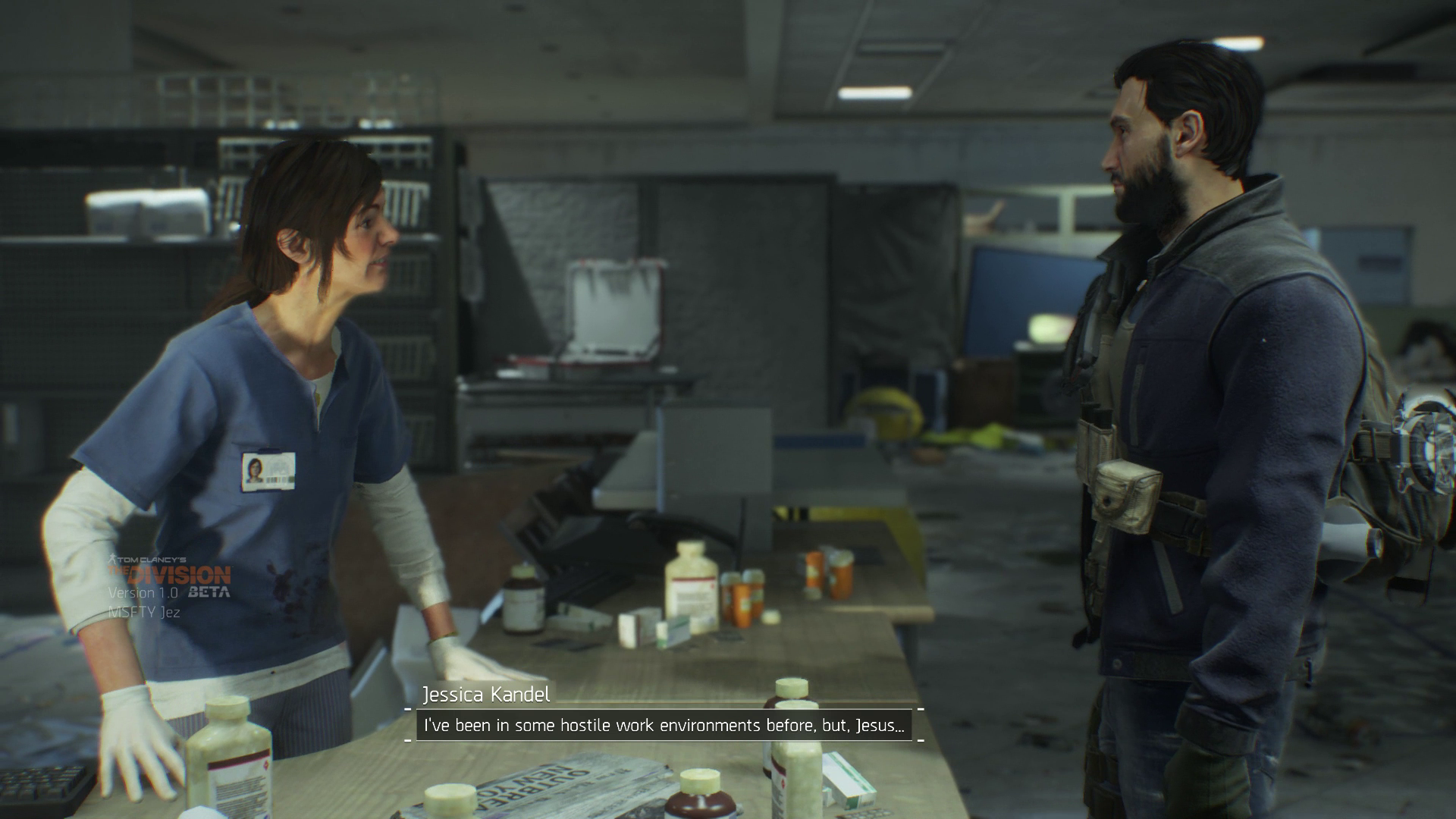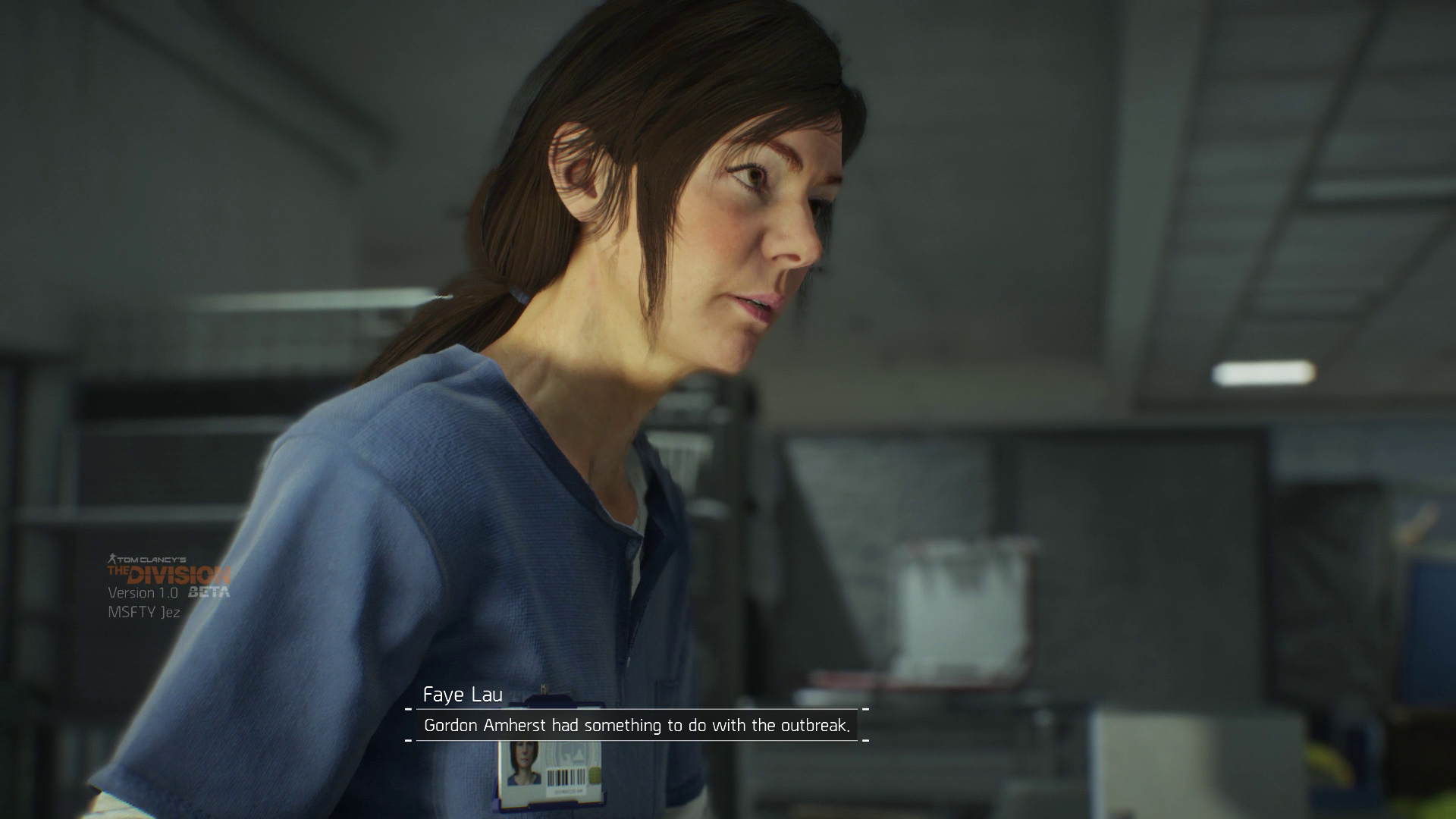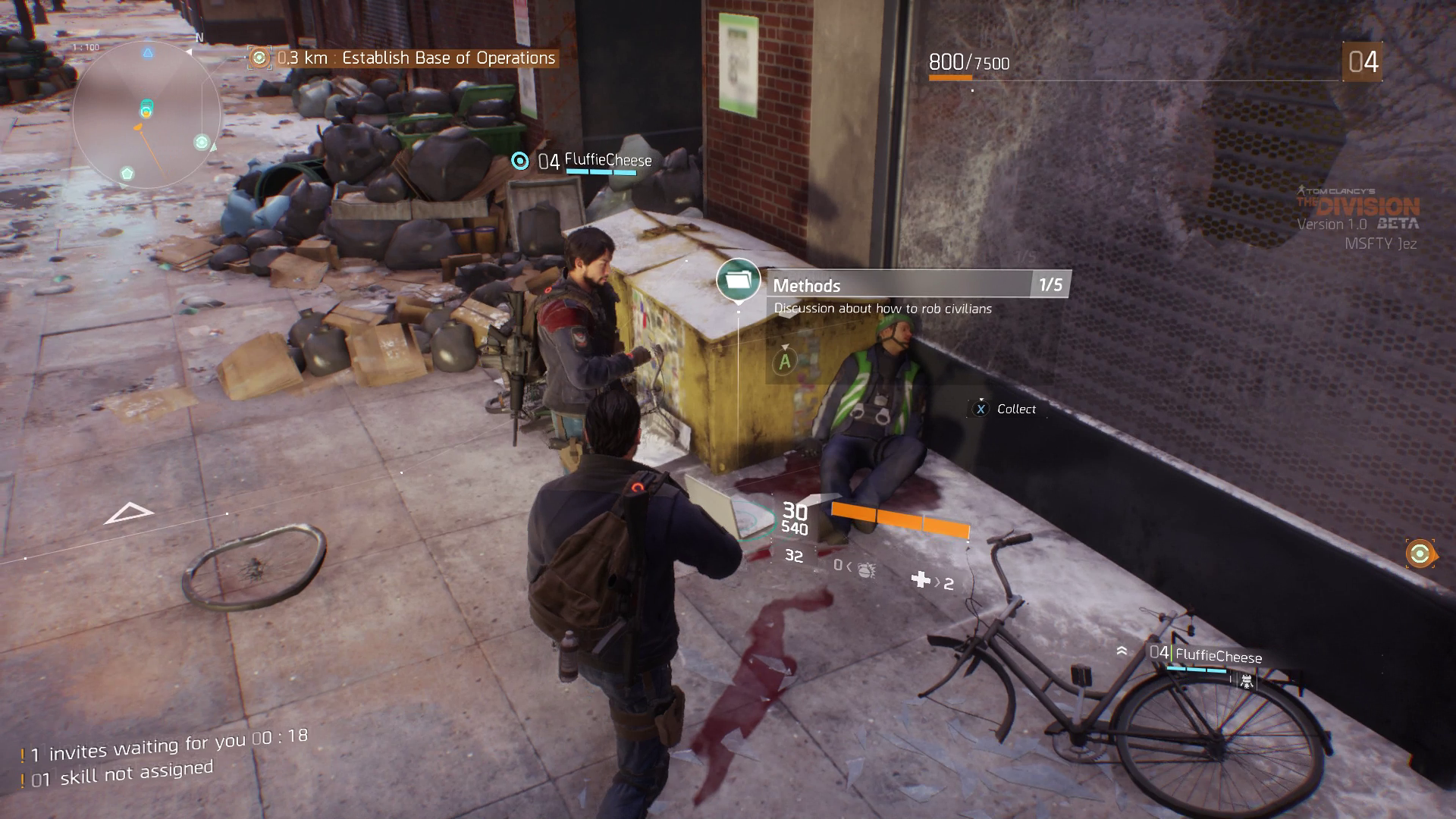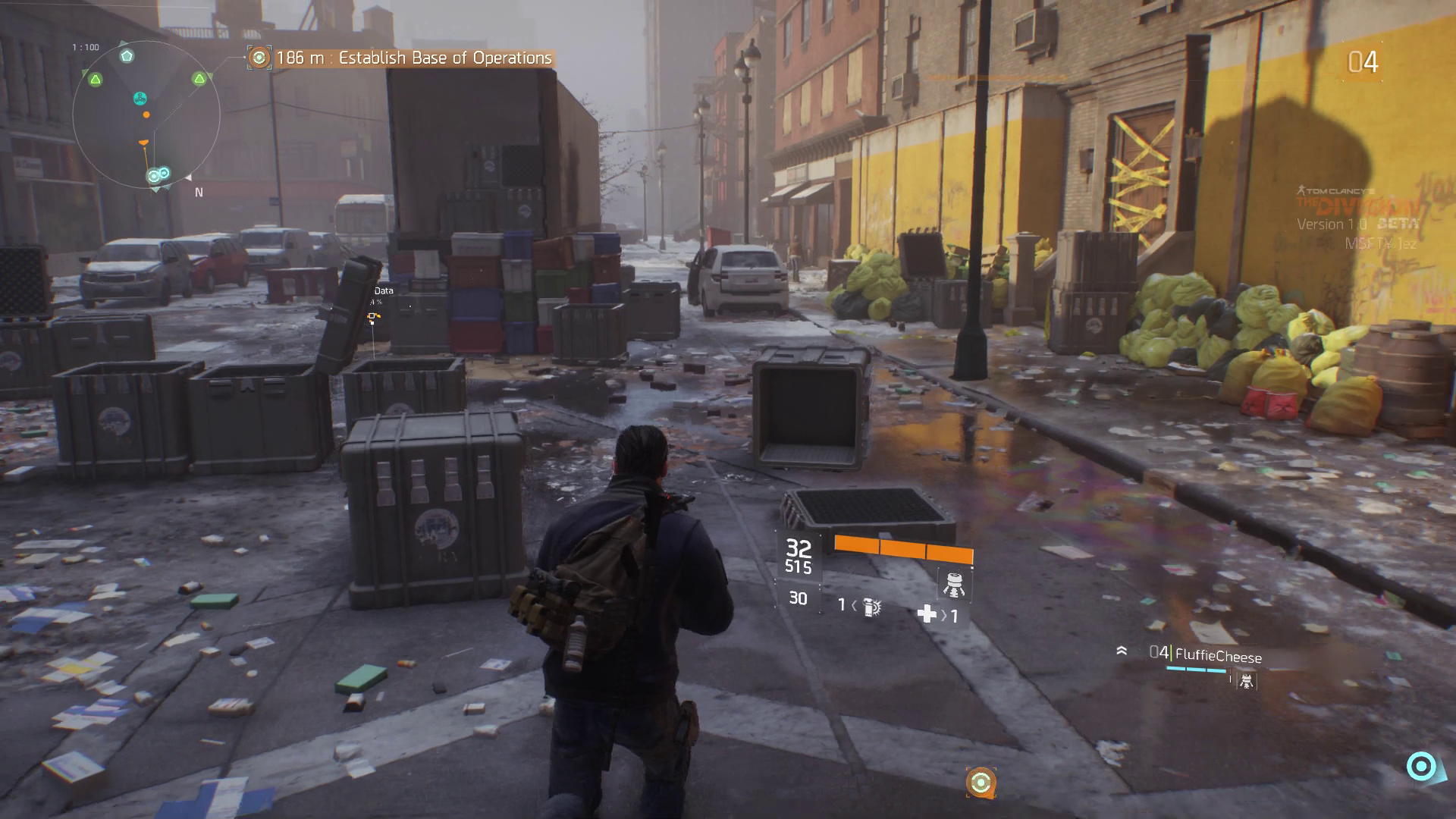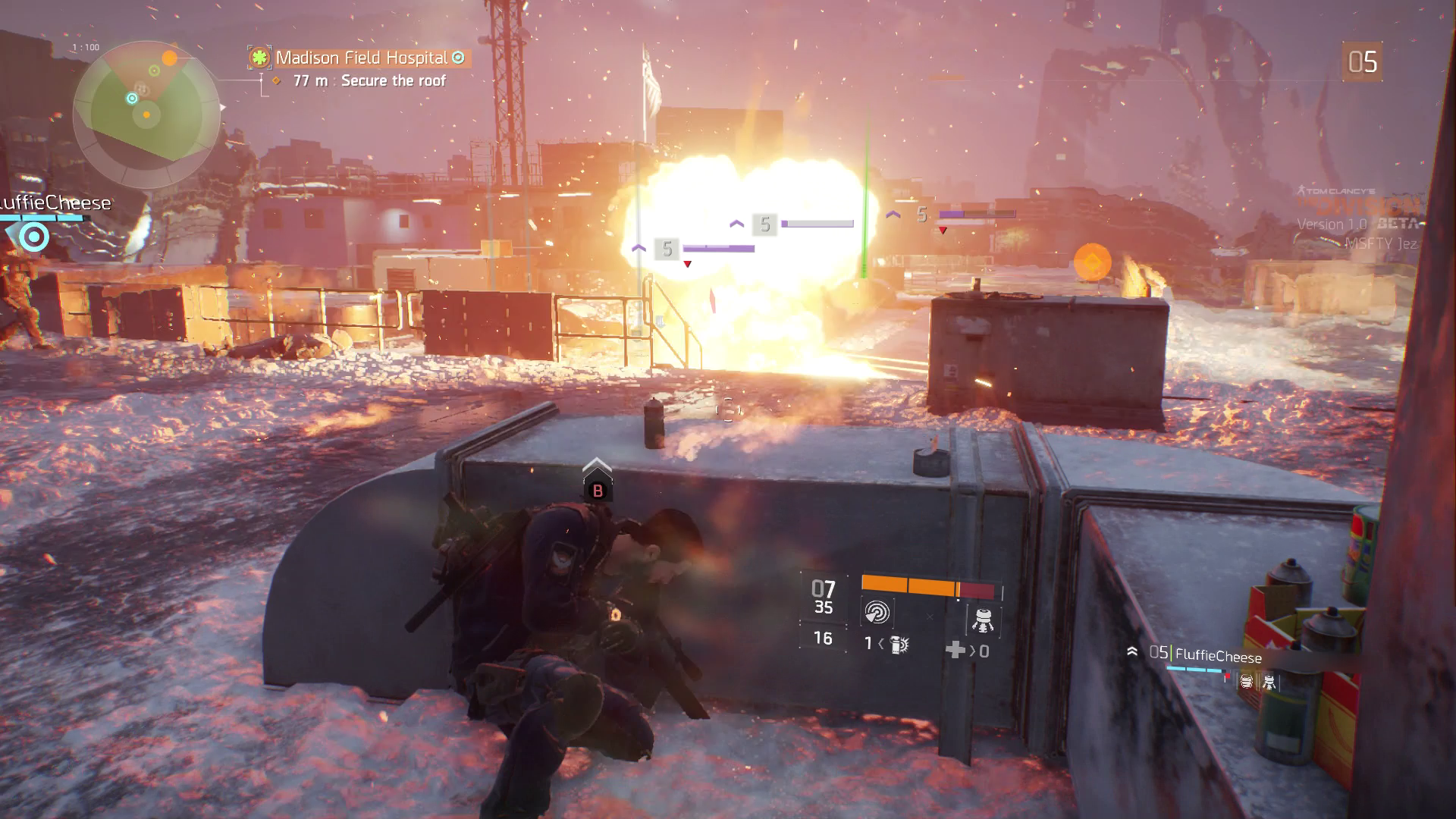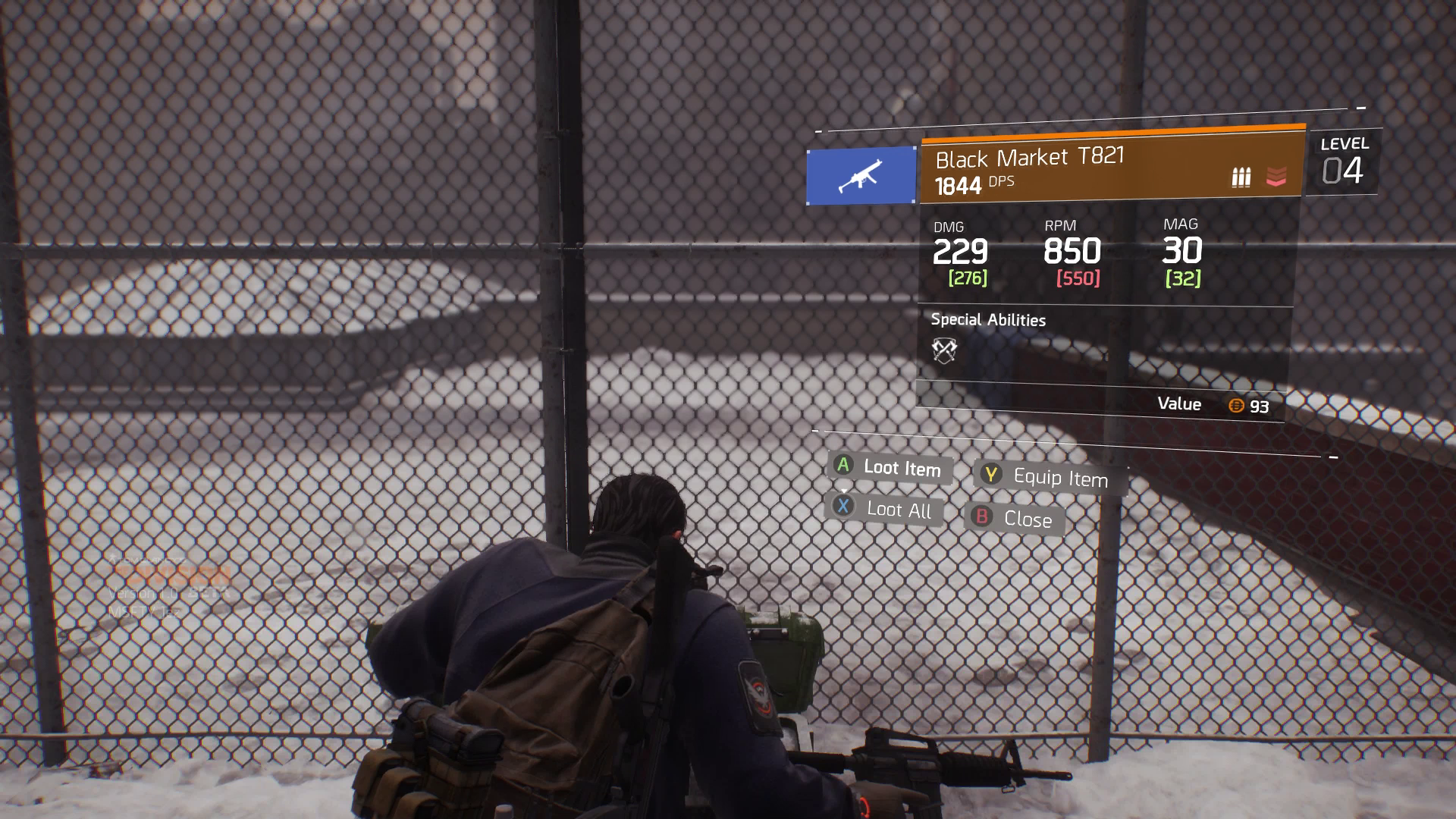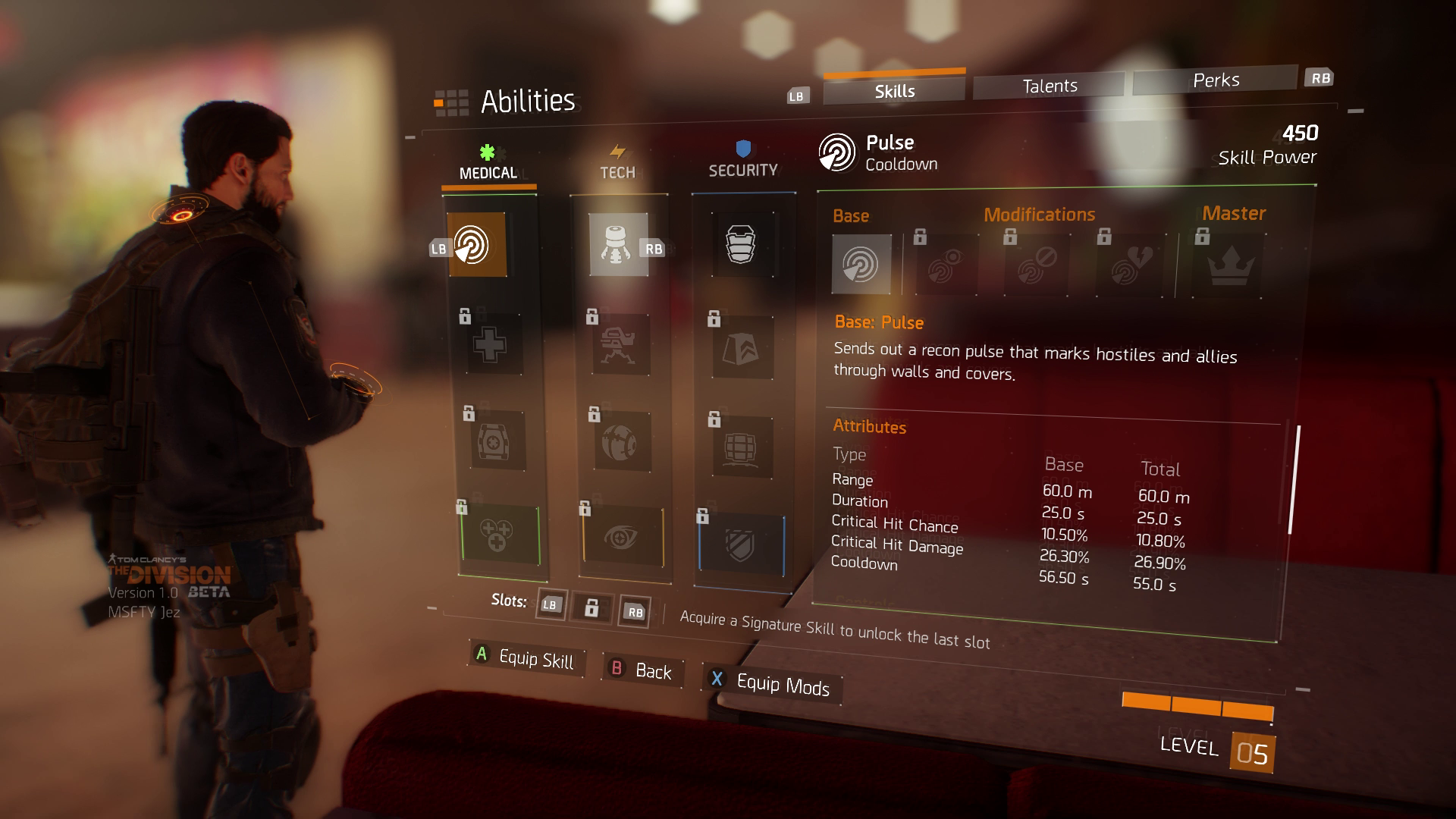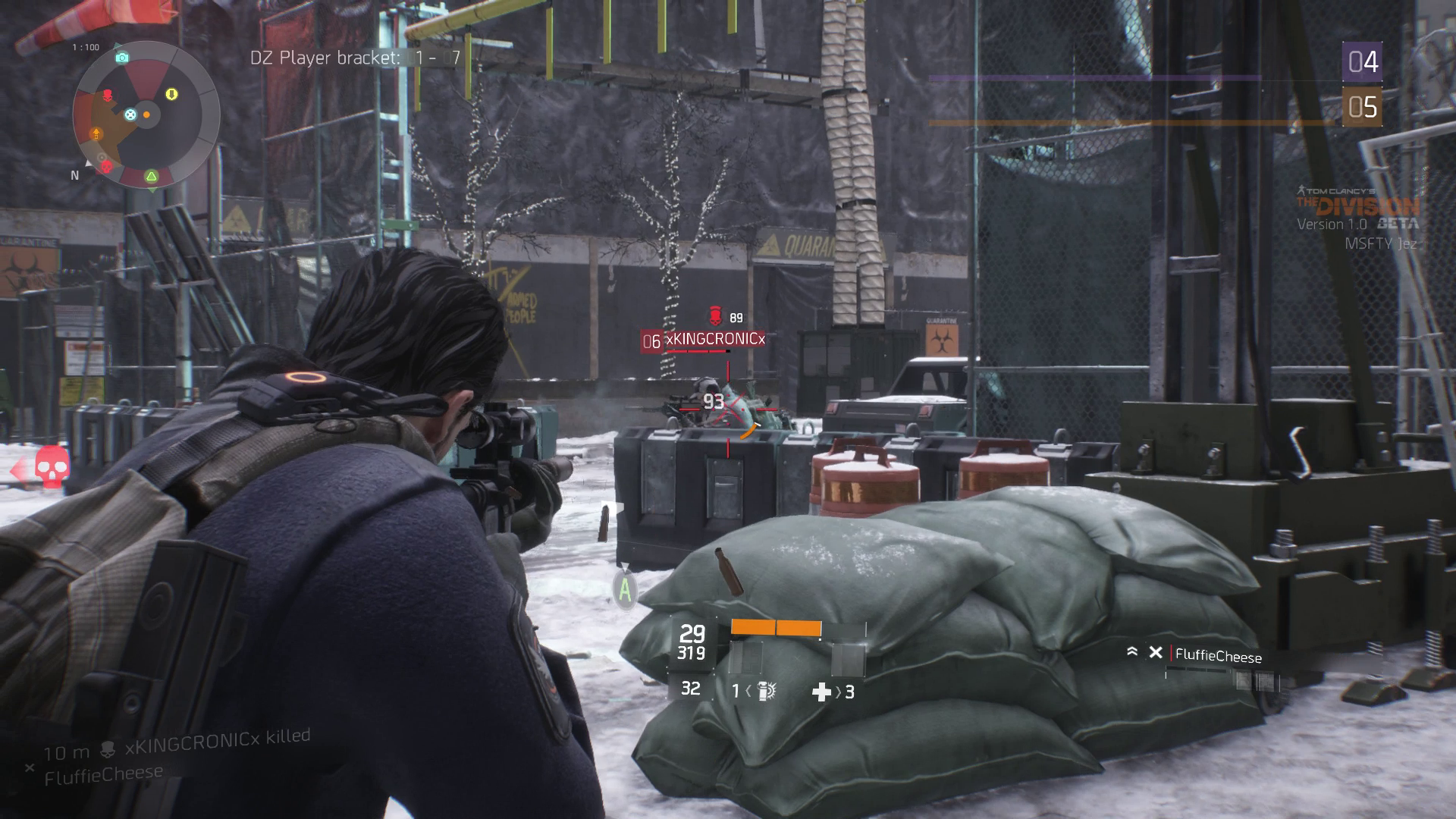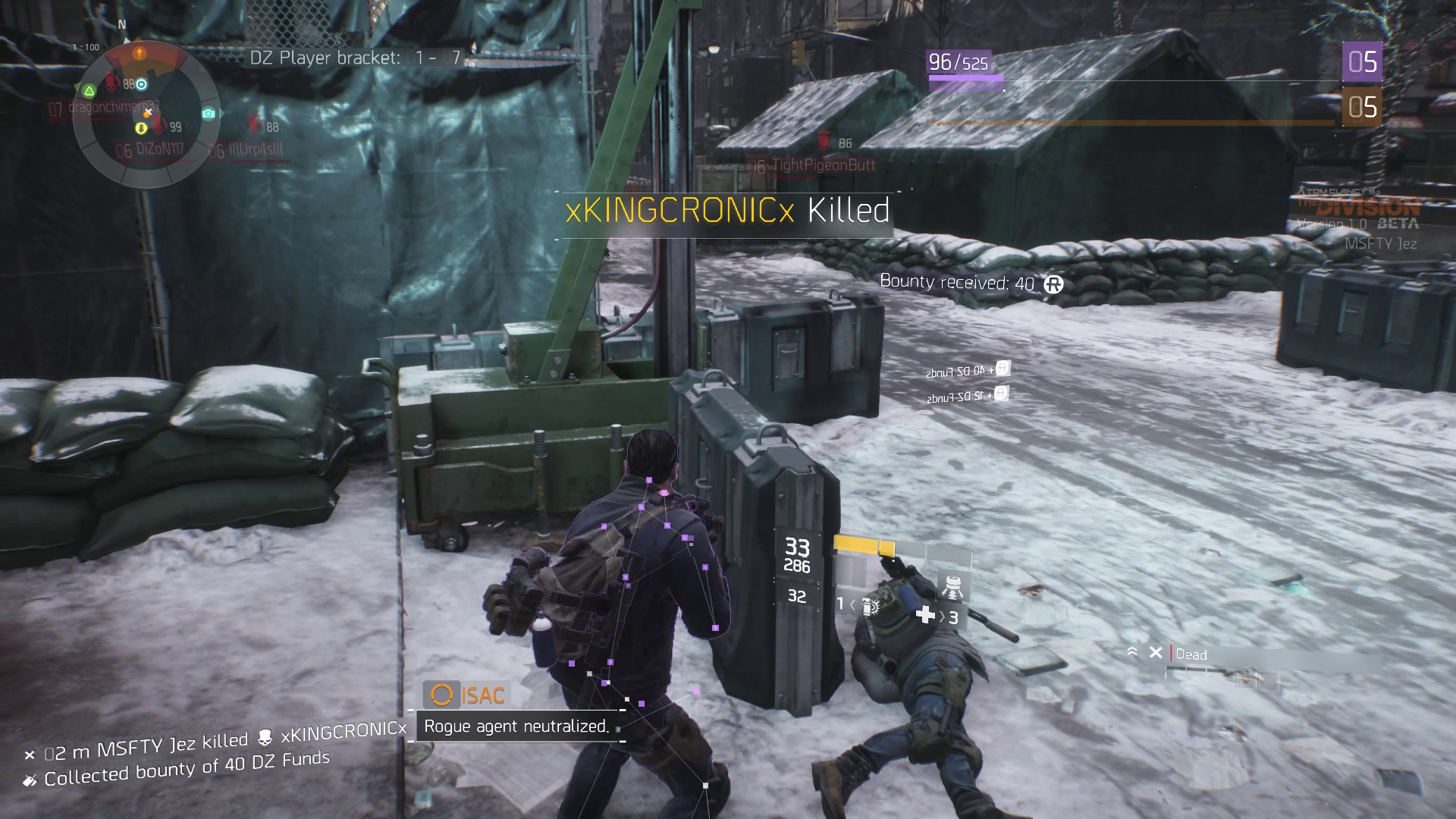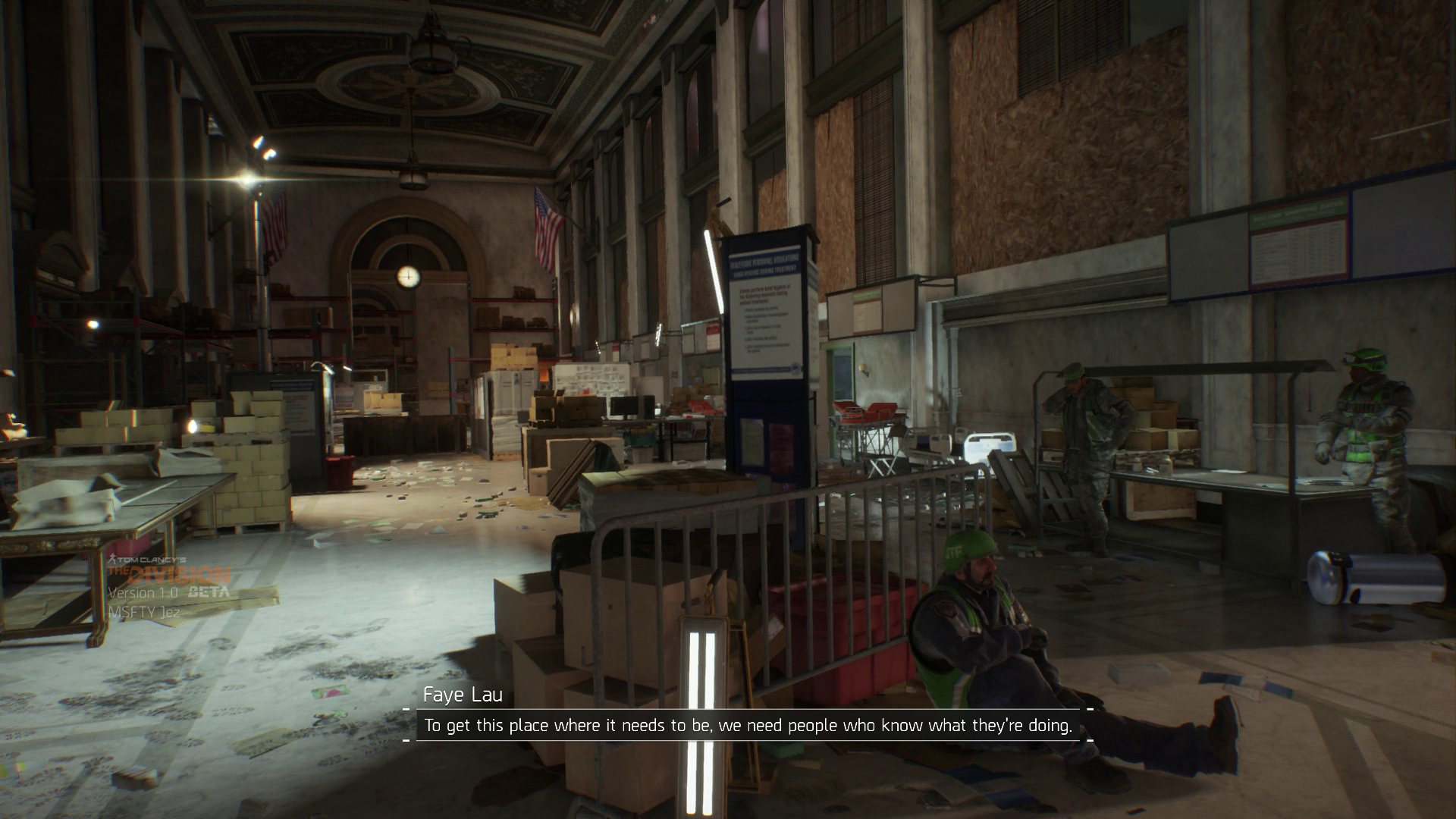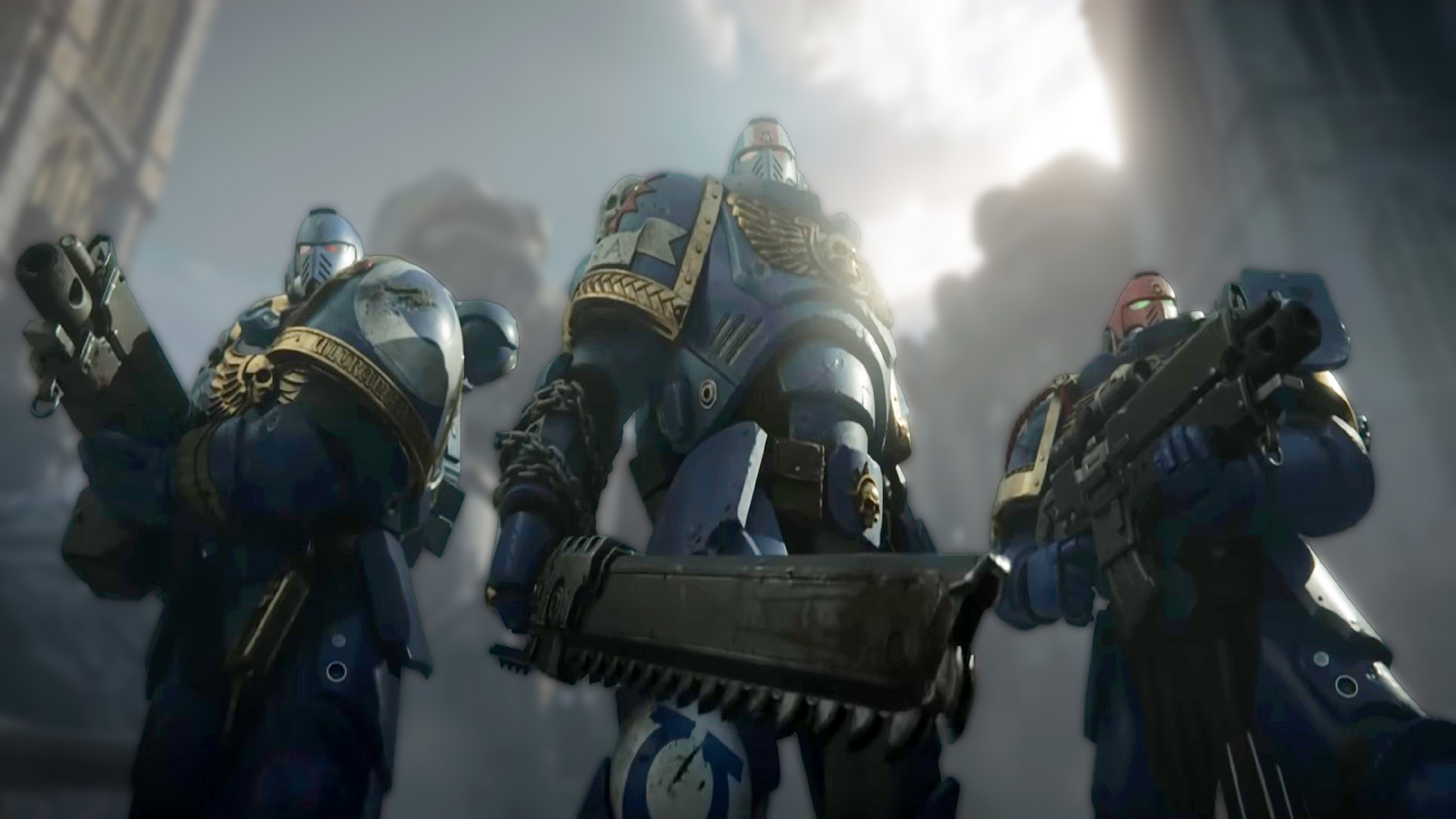Navigating depth, difficulty and the Dark Zone in The Division's Xbox One beta
The last few years haven't been entirely smooth sailing for Ubisoft, but The Division looks set to change all that.
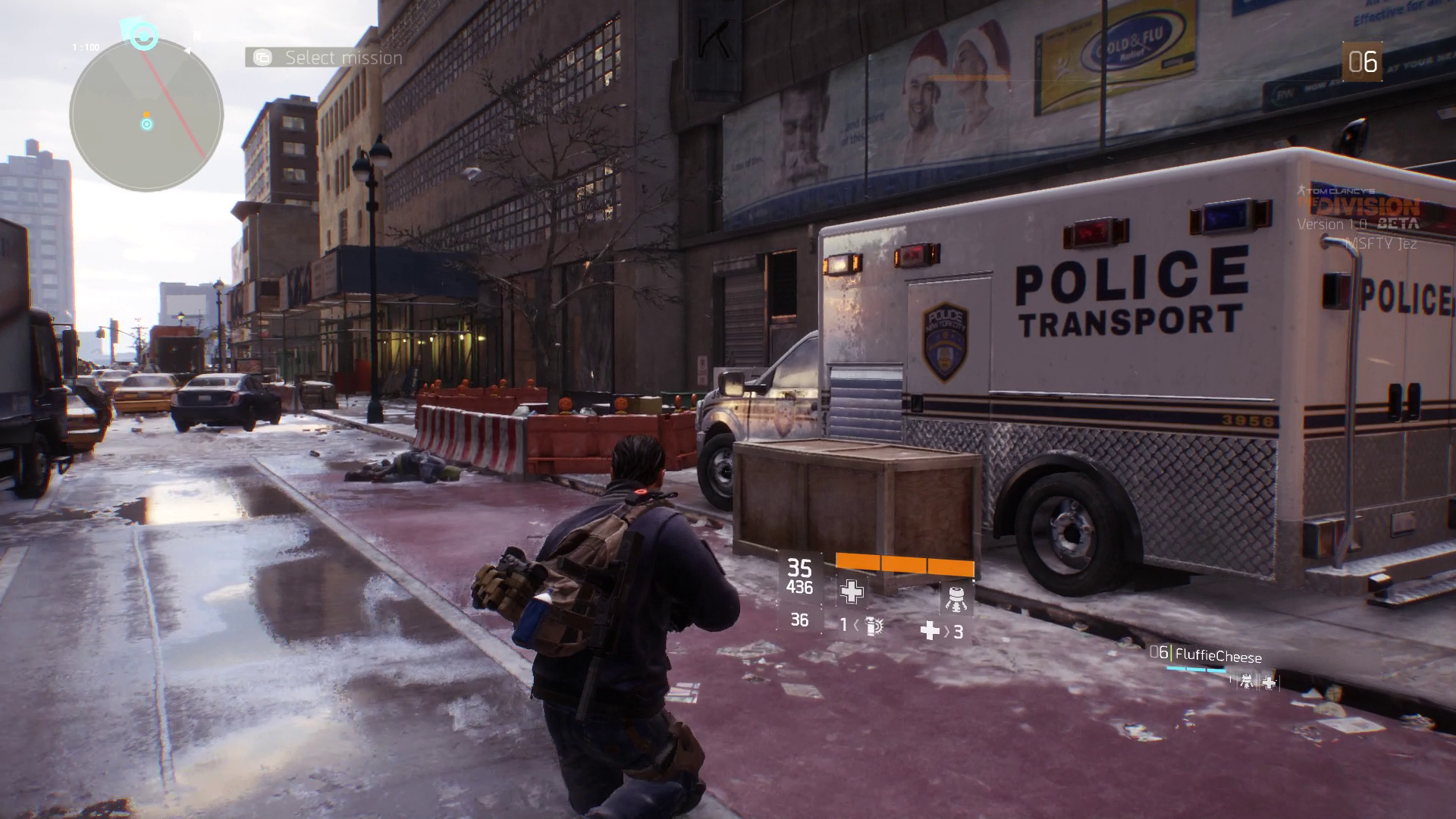
I went into The Division's Xbox One closed beta with limited expectations. Memories of Watch Dog's "downgrade" and Assassin's Creed Unity's less-than-perfect launch condition are still fresh in my mind. Trusting video game marketing materials is something I've learned not to do.
Thankfully, Ubisoft opted to let some of us get our hands on The Division early, ahead of its March launch date. I was fully prepared to be disappointed, but I can say with confidence that the complete opposite occurred — Ubisoft just might have a blockbuster on their hands.
Deconstructing New York City
I've never been to New York City, but if I ever make it there, I hope it's in better condition than it is in The Division. For those that don't know, The Division takes place in a post-apocalyptic near-future, where a deadly virus has wiped out millions of people, basic infrastructure, and much of the government. As a member of the Strategic Homeland Division, (or, The Division for short), the president empowers you to uncover the true cause of the outbreak, piece back civilization and unravel the conspiracy that destroyed it — by any means necessary.
The collapse of society has utterly ravaged New York City, due to the weaponized pathogen's spread on U.S. bank notes. Ubisoft has created something truly special to visualize that premise. Ubisoft's various studios aren't strangers when it comes to lovingly-detailed open-world reconstructions of real locations. We've seen it in Assassin's Creed, we've seen it in Watch Dogs, but the areas in previous Ubisoft open-world games, while beautiful, felt little more than paintings upon which to build gameplay. The Division goes a bit further.
"New York City has been utterly ravaged by a weaponized pathogen in The Division's lovingly-detailed open-world reconstruction."
Seeing an iconic contemporary Western city turned on its head with such incredible levels of detail synergizes with the game's premise like no other Ubisoft title has achieved previously. The beta provided us with an area representing roughly 20% of what will be available in the full game, but there was still far more detail to examine and explore than was humanly possible in the beta's 4-day duration. Piles of body bags abandoned in makeshift quarantine centers; blood-stained apartments looted and left behind; roaming vagrants eating rats to survive. Despite how vast and surprisingly vertical the beta's play space was, I found only trace amounts of copy and paste — which bodes well for the full game.
Beyond the haunted architecture and monolithic skyscrapers, The Division boasted incredible weather effects and day and night cycles, complete with snowfall, thick fog, and enveloping darkness. The mist was particularly impressive, catching light sources to create vivid hazing — which was particularly awesome when it involved enemy gunfire and flamethrowers. And all this was running at 1080p on Xbox One; the PC version can scale all the way up to 4K.
The beta was intended to test core aspects like server stability, connectivity and the like, so it featured little in terms of story — but what was on offer felt promising. Structurally, the game tasks you to build a base in the heart of New York and to do that you'll find yourself rescuing (or recovering) various specialists scattered around the city. The only story mission available in beta involved the rescue of a doctor for your medical wing, which took place in a seamless dungeon-like area within Madison Square Garden.
All the latest news, reviews, and guides for Windows and Xbox diehards.
After you save her, she returns to your base and gives you a lead to find another key character. Presumably, each one you recover will lead you further towards unraveling the conspiracy that ended society.
Beyond main missions and cut-scenes, the game also features audio recordings, text files and "Echoes", which add further context and, in some cases, a dose of humanity to the lifeless Manhatten streets. Your equipment can sometimes parse data from various sources like discarded phones and CCTV cameras to build a holographic reconstruction of a prior event, rendering augmented reality ghosts in a scene you're able to explore.
Hovering the cursor over different individuals reveals personal information, similar to Watch Dogs, and some of these Echoes also form parts of quests in an Arkham-style detective mode fashion. There's a ton of potential here, combining the scant story details offered in the beta was more than enough to immerse and enthrall, and left me hungry for more.
"The Division's deconstruction of New York City is a true work of art."
Dialing back to Madison Square Garden, building interiors seem to lend themselves well to adding variety to the game's locations — which could very easily fall into a trap of repetitiveness. Regardless of The Division's meticulous detail, I think the visual themes could get a little dull over time. It'll be interesting to see how the full game tries to inject some locational diversity. While exploring, I did dive into sewers, abandoned subways and climb apartment buildings, many of which weren't fully populated with quests and loot, but each gave a clue as to how Ubisoft could diversify exploration in the full game.
If I had to sum it up, The Division's deconstruction of New York City is a true work of art, simply breath-taking. Every aspect of it complements the harshness of its plot — and the scary truth that it could all become a reality some day. The Division is, after all, based on a real-world simulation that foretold the collapse of society, should it suffer a similar bio-terror attack.
When it comes to atmospherics and immersion, Ubisoft has truly outdone themselves with The Division, it's not often a game comes along that is such a pleasure to write about. However, like the collapse of society, it could all fall apart if The Division's gameplay isn't on point. Thankfully, it is.
Depth, Difficulty, and the Dangerous DarkZone
The Division combines elements of various genres to create something bold, unique and gratifying. Borderlands proved you could get RPG-style progression and loot into a mainstream shooter, Destiny proved it works in an entirely online scenario, but it's on The Division to show it works in a tactical, cover-based shooter. So far, it seems like they've proven it with confidence.
The Division is often described as an MMORPG, but I don't think that's accurate. Players can seamlessly appear in your world, but it's not a persistent experience like a true MMO, such as Star Wars: The Old Republic or World of Warcraft. The Division doesn't force any multiplayer aspects on you (unless you enter the DarkZone, more on that in a bit). If it's your preference, you can play the entire game solo, completely avoiding contact with other players. You'll have your own version of The Division's sizable world, similar to Diablo and Borderlands.
As described above, that vast world is atmospherically on point, but how well suited is it to gameplay? Thankfully, from what we've seen so far, it's incredibly well executed.
The Division features cover-based third-person shooting, which is very reminiscent of Watch Dogs and some of the more recent Splinter Cell games. You can target new cover using the cursor, and then sprint to new positions (making careful considerations for how safe it is to break cover). The systems, when combined with very thoughtful map design, result in a broad potential for tactical play. Enemies will also use cover, attempting to surround and flank you and your teammates, using grenades and other abilities to keep you on your toes. The enemy types weren't particularly varied in the beta, but there's every likelihood we'll see much more in the full game. Fantasy games like Diablo and sci-fi games like Destiny have a broader canvas for creating unique enemy types, at least visually.
The tendency to realism may also impact the game's loot as well. I recalled an interview on Star Wars The Old Republic, where the developers discuss how to make lightsaber upgrades feel unique in an RPG, considering they're just hilts. I think The Division could suffer from the same design problem.
"The Division offers lots of ways to play strategically as a team, complementing each other's playstyles, with diverse and meaningful differences"
Once you get a specific-type of a real-world gun, it's hard to imagine how they can make visual upgrades compelling in the future. How do you make a high-level AK-47 appear more visually prestigious than a low-level one? And so on. It'll be interesting to see how The Division — steeped in near-future realism — tackles these design challenges.
With regards to raw mechanics, The Division delivers once again — the guns feel excellent to use. Headshots deal critical damage as you'd expect, you get satisfying number pops for each. Every weapon type feels distinct and weighty, and that distinction extends to mods and play styles too. You can switch between two primary weapons and a sidearm (with infinite ammo, for desperate situations), and the game gives you plenty of room to customize your experience. Weapon mods, different types of character roles, sniping from afar or getting up close with a shotgun — The Division offers lots of ways to play strategically as a team, complementing each other's playstyles, with diverse and meaningful differences.
"Even the most sophisticated A.I. can't test a player as well as another human can — that's why they created the Dark Zone."
Speaking of team play, the beta was by no means a walk in the park. The outside world is easy enough, delivering a relatively pedestrian experience with radiant quests like "go here", "loot this", "fight these guys", and so on, but the dungeon-like story mission was a little different. For the Madison Square Garden mission, you were able to join matchmaking queues to invite up to 3 other players, as well as increase the difficulty of the scenario. More players meant harder enemies and fighting through those waves of crazed looters in a team on hard difficulty presented an exhilarating challenge. And this was only the first story mission.
Even the most sophisticated A.I. can't test a player as well as another human can, and The Division knows it. That's why they've created the Dark Zone.
The Dark Zone is a (quite literally) quarantined area of the game, seamlessly shared with other players — whether you're grouped with them or not. The Dark Zone represents the areas of New York hit hardest by the pathogen. High walls surround the Dark Zone, giving it a foreboding presence from the outside. Inside, there are no signs of life, characters don ventilation masks to traverse it, and the urban decay is turned up several notches. That decay extends to the zone's rules, or well, lack thereof.
The Dark Zone is pure anarchy, and you will be killed by other Division agents while inside this zone. While the story details are a little scant, the Dark Zones house some of the game's most powerful, tantalizing loot, and to obtain those items is an incredibly fraught affair.
When you do find an item in the Dark Zone, whether looted from an NPC or an abandoned storage crate, not only does the item appear on your character's back in a bright yellow quarantine bag, but it has to be extracted. Extractions can only happen in designated areas, and calling a loot extraction chopper alerts all nearby players to your presence. Those players may simply wish to use the helicopter as well, or, occasionally, they may want to hunt you down, shoot you in the back and steal the loot for themselves — I know this, because I was one of those players.
When you kill another agent in the Dark Zone, you're flagged as a rogue agent, complete with a bounty, and can be seen by all other players on the map. The bounty dissipates over time, but for 80 seconds or so (increasing per innocent player you kill), you're a valid and desirable target.
On the first day of beta, the Dark Zone was total chaos as players got to grips with (or blatantly ignored) the rules. On the second day, a tentative peace appeared to form, few players were willing to break the ceasefire, roaming in groups to explore what the Dark Zone had to offer. Occasionally an extraction flare would fire, and several rogue agents would pop up on the map, as greed took hold.
The Dark Zone draws on that player-driven emergent gameplay that is typically only found in MMOs or survival-based online games. Players that meet in the Dark Zone can emote and communicate in a rudimentary way, or simply let their guns do the talking. Permanently connected games like ARK: Survival Evolved and Day-Z are well known for allowing players to grief each other, but Ubisoft have very carefully segregated this type of play into its own, quite literal quarantine zone, and by the looks of things, it can be completely avoided.
Like many things in The Division's limited beta, freedom to choose played heavily in my experience. I could easily switch between a healer, damage dealer or support character; I could change my playstyle depending on what weapons I equipped and modified; I could indulge in difficult team-based missions against A.I. opponents or dive into the danger of the Dark Zone. And all this was offered in The Division's beta, in a tiny part of what will be on offer in the full game.
Building a Blockbuster
The hype for The Division is off the charts, and the beta further catalyzed expectations. However, questions remain. Just how big will the world be? How much content will be on offer? Will there be a rewarding reason to continue playing once the story is over? Will I need the season pass to keep up with the community? Should players expect regular content drops to keep the end-game fresh? Is The Division intended to end once the credits role?
When you willfully inject behavioral incentives like loot and EXP grinding to keep people addicted, I'd argue that developers have some responsibility to keep the end-game content from becoming stale. As a connected open-world shooter with MMO-like mechanics, such as aggro management, class roles, and EXP progression, it's on Ubisoft to manage expectations about what The Division truly aspires to be.
Questions aside, The Division's beta showed nothing short of incredible potential. If Ubisoft has played their cards right, The Division may not only be a blockbuster, but it could be the standard bearer for connected games for years to come. I'll see you in the Dark Zone.

Jez Corden is the Executive Editor at Windows Central, focusing primarily on all things Xbox and gaming. Jez is known for breaking exclusive news and analysis as relates to the Microsoft ecosystem while being powered by tea. Follow on Twitter (X) and tune in to the XB2 Podcast, all about, you guessed it, Xbox!

